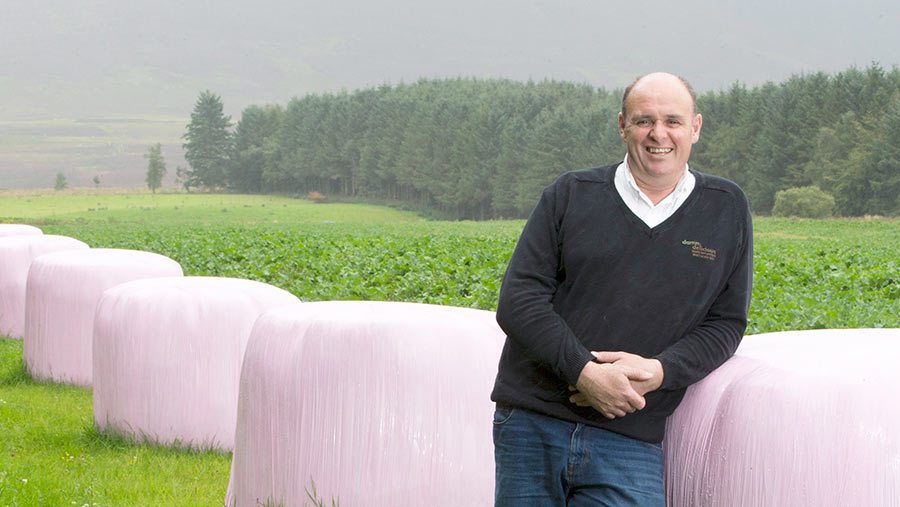Farmer Focus: Silage is fine but I’d rather graze it
 © Jeff Holmes
© Jeff Holmes This year has been one of the best years for producing our main crop – grass. The unpredictability of each grass growing season creates a huge challenge of matching the right number and type of stock to the amount of grass I am producing.
I suppose the challenge that this grazing season has created is probably the best – far too much of the green stuff.
Through my office window I can see the silage pit cover sitting 2 feet above the silage walls, as well as a large heap of surplus silage bales in the yard.
See also: Read more from our livestock Farmer Focus writers
Most of this silage has been made from fields that were taken out of the rotation because of the massive growth we got in early summer, so the quality is good with the first silage analysis at 11.3ME
To me, having all this silage is a failure; all that lovely high-quality grass should have been grazed by stock!
The great benefit of operating a rotational grazing system combined with a strict reseeding policy of high sugar grasses is that I can produce very high-quality grass, which I try to maintain to this time of year.
Cattle have performed reasonably well this season and our average DLWG was 1.45kg at the recent weighing.
My cattle out-winter on swift and silage bales and then kale and bales after Christmas.
‘Forage TMR’
This year I am trying a “Forage TMR” (total mixed ration). I have replaced 25% of the kale or swift crop and one of the bales they would normally get every day with fodder beet.
The fodder beet and swift have established well but the Maris Kestrel kale has suffered because of the missing pre-emergence spray due to wet weather.
I have finally succeeding in getting the sheep into a paddock system on two- or three-day moves and this has increased my stocking rate dramatically to 10 ewes and lambs per acre all summer.
I have joined a new Quality Meat Scotland-run discussion group for grass-based stock farmers, which is great. When I started rotational grazing fattening cattle, the only discussion available was with the voices in my head!
Our butchery business, Damn Delicious, has had the normal seasonal highs and lows, but is running ahead of last year.
Our Norfolk Black Christmas turkeys have now arrived and are happily exploring the woods.
Michael finishes 150-head of mostly Angus beef stores each year and runs 280 scotch mules on a 100ha forage-only enterprise as well as free range turkeys for Christmas near Biggar, Lanarkshire. Meat is sold through his online business and farm shop Damn Delicious with surpluses sold deadweight.
